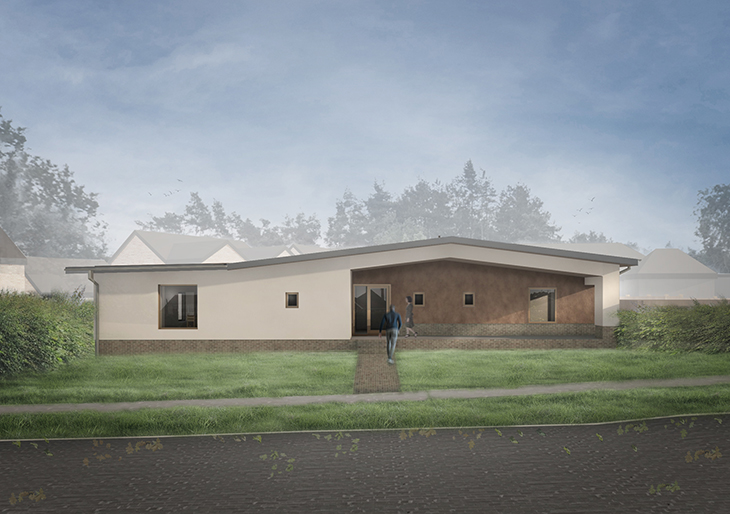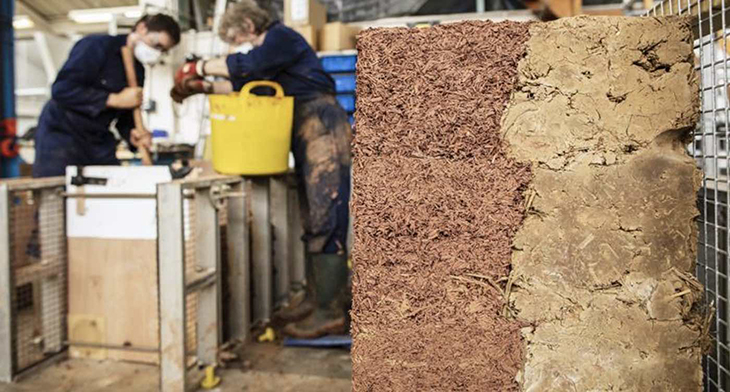
This contemporary British residence, constructed with robust mud walls, stands as a pioneering feat within an EU initiative aimed at advancing the creation of highly energy-efficient homes.
Architect Anthony Hudson ingeniously employed a centuries-old building technique to erect this bungalow, seamlessly aligning it with contemporary building standards and regulations. Situated in Fakenham, Norfolk, the walls of this dwelling are fashioned from a trifecta of elemental ingredients: hemp straw, earth, and water, collectively known as ‘cob’, thus christened the CobBauge project.
Cob construction imbues the walls with exceptional thermal insulation, meeting and even surpassing modern benchmarks. In January, local builders Grocott and Murfit brought Hudson Architects’ vision to life with the completion of this three-bedroom home, noted for its cost-effectiveness, although specific figures remain undisclosed.
Mud stands out as a remarkably sustainable building material, evidenced by the endurance of ancient cob structures in Britain, some of which have withstood the test of time for over five centuries.
Embracing sustainable design principles, the new dwelling boasts expansive, south-facing triple-glazed windows designed to harness solar warmth during winter months, augmented by an air source heat pump for supplementary heating.
This project forms a vital component of an EU-funded endeavor dedicated to propelling mud construction methodologies into the contemporary era, with a keen emphasis on achieving net-zero carbon emissions. Notably, this structure stands as the pioneering example of a cob building that fully aligns with modern regulations.

Upon hearing the EU’s call for architects to innovate in incorporating earth into housing designs, Mr. Hudson eagerly seized the opportunity.
“The challenge was to create a home using earth as the primary building material, but which could also be thermally insulated,” the 68-year-old explained.
“Earth is a very sustainable way to build, especially because it’s so widely available here in the UK.”
While there’s still progress to be made before mud houses can enter the mainstream market, Hudson is confident that these homes will eventually become commonplace.
“Although the materials are cheap and easy to source, the building method is very time-consuming. At the moment it all has to be done by hand, so labor costs run high.”

Their subsequent move involves devising innovative construction methods aimed at reducing labor intensity.
“Once we’ve worked that out, my guess is this will be a very attractive method.”
In the upcoming month of March, the mud house will be accessible to the public, offering an opportunity for viewing. This unique structure boasts a “green roof,” designed not only for aesthetic appeal but also to foster biodiversity. Its implementation serves as a proactive measure to counteract the diminishing green space on the site. By replacing lost natural areas with this eco-friendly feature, the mud house stands as a testament to sustainable architecture and environmental stewardship. Visitors will have the chance to witness firsthand the harmonious integration of human habitation with nature, promoting awareness and appreciation for eco-conscious living practices.
What are your thoughts? Please comment below and share this news!
True Activist / Report a typo


